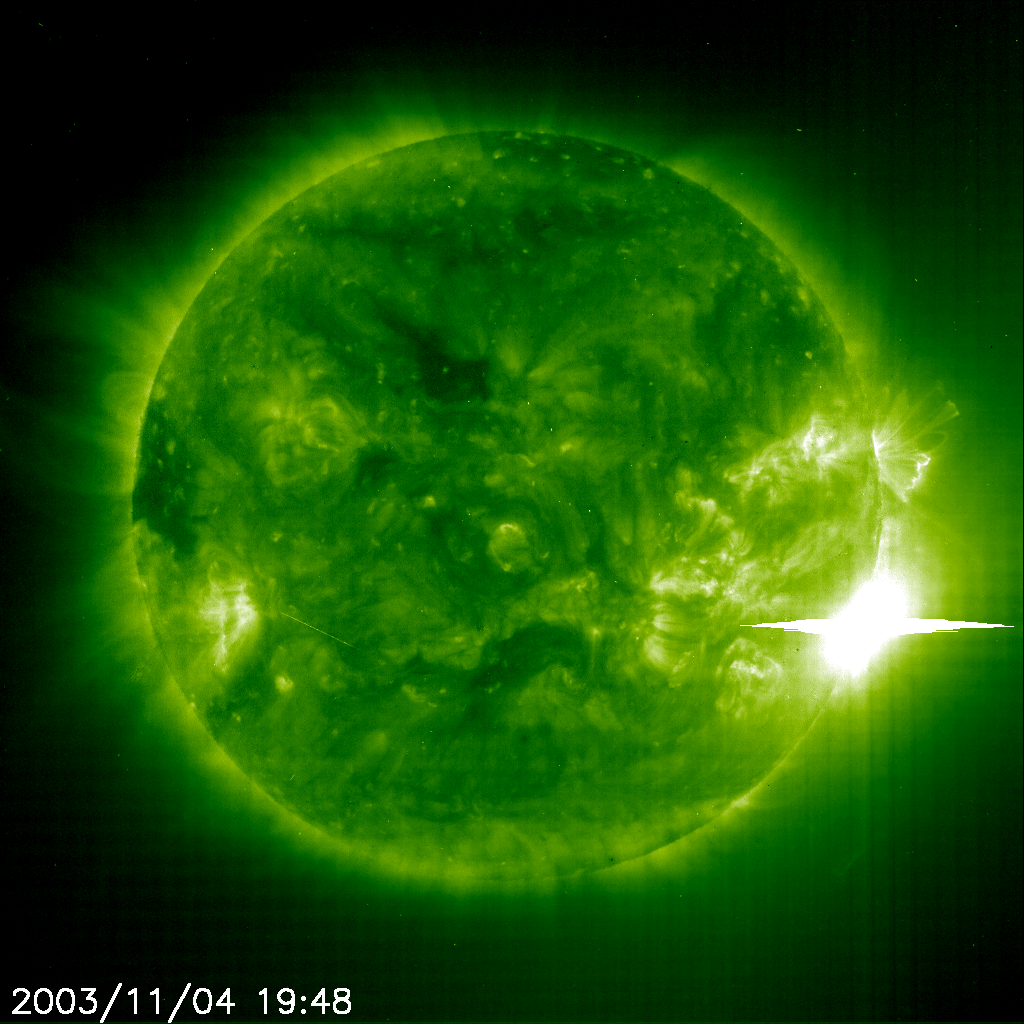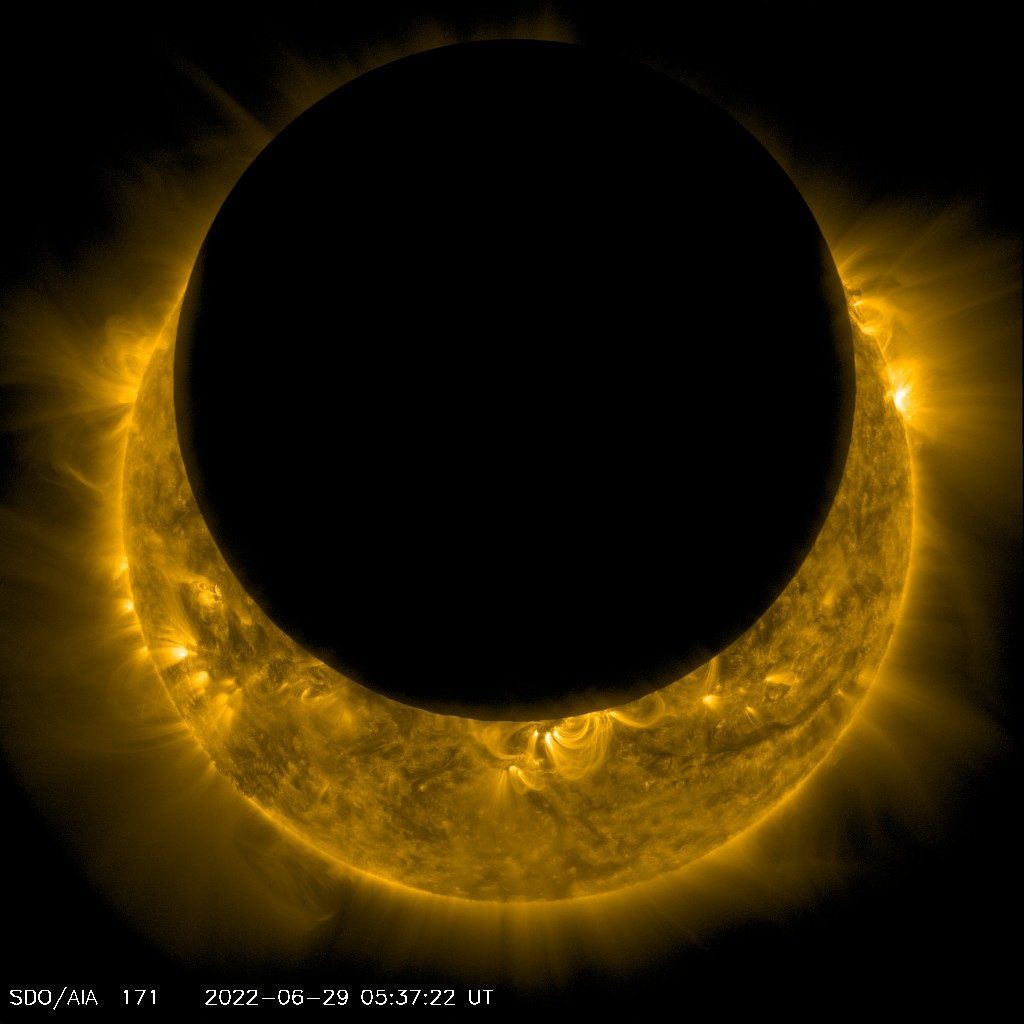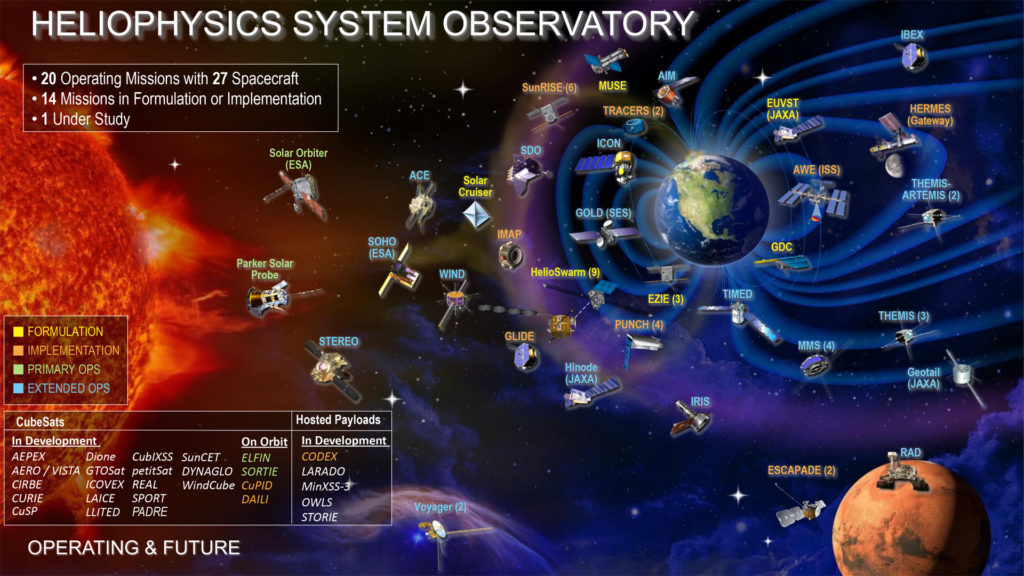
[“Living with a star” series]
[This post was inspired by a Wired article (noted below).]
Much has been written about our good fortune to live on a water world (with a stabilizing moon) in a goldilocks zone of a solar system with a star in a stable stage [1]. But stellar and planetary conditions are dynamic. Even in ancient times, celestial objects often revered as gods (with various temperaments) were subject to changes in mood.
Models (notions) of celestial perfection have given way to astrophysics, to an understanding of patterns, rhythms, and variability within a framework of physical laws.
We live with the expectation of the Sun rising and setting every day. Yet, that constancy is not without change. The Sun has spots. And some changes in our nearest star pose challenges to our survival [2].
The Sun is “the inconceivable, inextinguishable furnace at the center of our solar system that destroys as indiscriminately as it creates.”
• Wired > “Here Comes the Sun—to End Civilization” by Matt Ribel, Backchannel (Jun 21, 2022) – Life on this little mote depends entirely on the mercy of a cosmic nuclear power with an itchy trigger finger.
Matt Ribel recaps some solar history and lays out the challenges and consequences of coronal mass ejections which come our way [3].
Terms: Sunspot, coronal mass ejection, plasma, magnetic field / knot, polarity, (model of) solar cycle, geomagnetic storm.
Coronal mass ejection – the what, where, when
- Predictive models
- Traditional understanding of solar dynamics, solar cycles, statistics
- Satellite heads-up’s
- The magnetic cycle is the thing? Unbalanced magnetic bands
Effects of plasma bombs on the Earth – the what and what to do
- The polarity of Earth’s protective magnetic field
- Spacecraft in orbit (manned or not)
- Satellite trajectories
- Earth’s ionosphere and communications – radio, GPS, cell phones, airplanes
- Effects of geomagnetic storms – looking up in the sky
- Effects on Earth’s surface
- Loads on the electric grid (grid models)
- Transformer failures
- Power outages (with immediate and logistical impacts)
- Worst-case scenario(s)
- Homeland Security
- Grid hardening (what’s required vs. what’s mandated: cf. the February 2021 collapse of the Texas power grid)
- Geomagnetic monitoring sensors
- National / state energy policies
- Reliability standards
- The most vulnerable
If the utilities remain unmotivated, humanity’s ability to withstand a major geomagnetic storm will depend largely on our ability to replace damaged transformers. A 2020 investigation by the US Department of Commerce found that the nation imported more than 80 percent of its large transformers and their components. Under normal supply and demand conditions, lead times for these structures can reach two years. “People outside the industry don’t understand how difficult these things are to manufacture,” Kappenman says. Insiders know not to buy a transformer unless the factory that made it is at least 10 years old. “It takes that long to work out the kinks,” he says.
A framework of risk
In a climate of risks, we are left with the proverbial challenge à la “For Want of a Nail“: For the want of a capacitor, the transformer was lost; for the want of a transformer, the … was lost …

References
• NASA > Science > Heliophysics > Programs > Living With a Star
• Wiki > Living With a Star (LWS) – a NASA scientific program to study those aspects of the connected Sun-Earth system that directly affect life and society.
• Wiki > Space weather – “space weather” was first used in the 1950s and came into common usage in the 1990s
• NASA > Science > Space weather
• NASA > SDO – Solar Dynamics Observatory
• NASA > blogs > Solar Flares FAQs
• NASA > Heliophysics > Mission Fleet Chart – HPD (Heliophysics Division of Space Weather Science of Science Mission Programs)
Science questions:
- What causes the sun to vary?
- How do Earth, the planets, and the heliosphere respond?
- What are the impacts on humanity?

Notes
[1] As, for example, related to discussions of the anthropic principle and the Drake equation.
[2] For example, as dramatized in the Apple TV+ film “Finch” (2021), massive solar flares.
[3] The article begins with an answer to an interesting question about stellar photons: How long does it take for photons to emerge from the interior of the Sun? Using a metaphor of a crowded nightclub Matt Ribel notes that the journey averages ~100,000 years!
TO A PHOTON, the sun is like a crowded nightclub. It’s 27 million degrees inside and packed with excited bodies—helium atoms fusing, nuclei colliding, positrons sneaking off with neutrinos. When the photon heads for the exit, the journey there will take, on average, 100,000 years. (There’s no quick way to jostle past 10 septillion dancers, even if you do move at the speed of light.) Once at the surface, the photon might set off solo into the night. Or, if it emerges in the wrong place at the wrong time, it might find itself stuck inside a coronal mass ejection, …

Low-earth orbiting spacecraft experience the effects of drag even in the rarified atmosphere there. And that drag varies with solar activity.
• Space.com > “Wild solar weather is causing satellites to plummet from orbit. It’s only going to get worse” by Tereza Pultarova (June 23, 2022) – Complex interactions with solar wind in the upper atmosphere shifts denser air upwards.
Image credit: ESA
The Space.com article “Wild solar weather is causing satellites to plummet from orbit” (cited above) notes the drag effect “also helps clean up the near-Earth environment from space junk.” This Space News article highlights the ongoing problem with space debris.
• Space News > “X Prize Foundation studying active debris removal competition” by Jeff Foust (June 24, 2022)
Credit: Pixabay/CC0 Public Domain
Even trees tell stories of solar storms. Tales of energetic protons. This article is a useful recap of the relatively young science of solar astronomy, including the study of carbon-14.
• Big Think > “World’s oldest trees reveal the largest solar storm in history” (June 29, 2022) – The Carrington event of 1859 likely was not the first such great solar storm – or the last.
Notes
[1] Wiki: The Carrington Event was the most intense geomagnetic storm in recorded history, peaking from 1 to 2 September 1859 during solar cycle 10. … Telegraph systems all over Europe and North America failed, in some cases giving telegraph operators electric shocks. Telegraph pylons threw sparks. Some telegraph operators could continue to send and receive messages despite having disconnected their power supplies.
Not all solar storms are the same. CMEs, CIRs, …
• Live Science > “Surprise solar storm with ‘disruptive potential’ slams into Earth” by Harry Baker (June 28, 2022) – Experts were initially unsure what caused the freak geomagnetic event.
There’s more to learn about space weather and understanding the socioeconomic impact.
• Space.com > “Is the electric grid ready for extreme space weather?” by Greg Uyeno (July 1, 2022)
Image [shown in article, not here] caption: The sun unleashed a major X1.1 class solar flare from an active sunspot cluster on its eastern limb on April 17, 2022 GMT. This view was taken by NASA’s Solar Dynamics Observatory. (Image credit: NASA/SDO and the AIA, EVE, and HMI science teams)
Credit: NASA SDO Solar Flare 05-04-2022
Solar storm forecasting is not exact.
• Space.com > “Strongest solar storm in nearly 6 years slams into Earth catching forecasters by surprise” by Daisy Dobrijevic (March 24, 2023) – Forecasters weren’t completely caught off-guard; however, they didn’t expect a magnitude G4 storm [on a scale from G1 to G5].
G4 (Severe) Geomagnetic Storm Alert: CME influences continue and geomagnetic response escalated to the G4 (Severe) storm level on 24 March at 12:04 am EDT (24/0404 UTC). Image credit: NOAAH